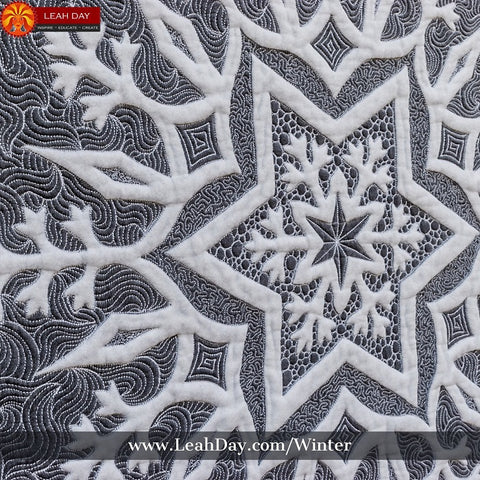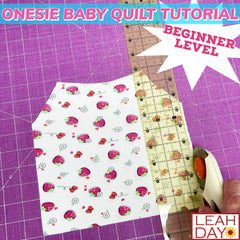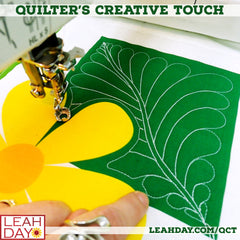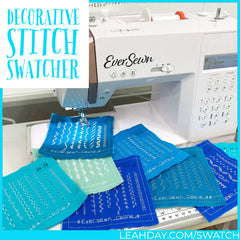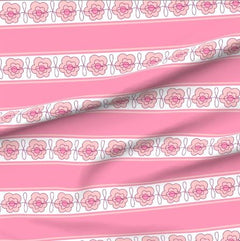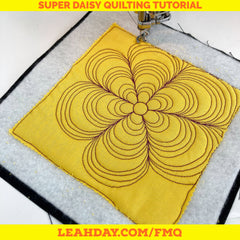McTavishing is a beautiful free motion quilting design that creates a texture of flowing water or blowing wind on your quilts. This was the second design I learned how to free motion quilt and I discovered it in Karen McTavish's book Mastering the Art of McTavishing.
Learn how to free motion quilt McTavishing in this ultimate quilting tutorial:
For this tutorial I quilted on my home machine, and my Qnique Longarm Machine. I hope you enjoyed seeing how this design was quilted on both types of machines.

I can't explain how much Karen's McTavishing design changed my perspective on free motion quilting. Up until that point, I'd only quilted Stippling which is a beautiful texture, and it doesn't contain the movement and flow of McTavishing.
What struck me immediately was how much McTavishing looks like water or wind. It also involves two new techniques that are essential for many free motion quilting designs: echoing and travel stitching.
Echoing is stitching a set distance evenly around a quilting motif, another line of quilting, or a shape on your quilt. This could be stitching 1/4 inch away from the ditches (seamlines) on your quilt or 1/8 inch away from an appliqued shape. Quilting a line evenly around another shape is called echoing.

Travel stitching or traveling is quilting over a previous line of quilting. Your goal is to stitch right on top of the line so you end up with two lines of quilting stacked on top of one another. This allows you to move through the design smoothly and it also adds extra thread texture to the surface. When you travel stitch over a line of quilting, you make it bold so it will stand out better if you're quilting with contrasting thread.
Yes, travel stitching is definitely allowed on your quilts! Sometimes I get questions about it from beginning quilters just getting started who have only ever quilted Stippling. Just because that design has a rule to never cross your lines of quilting, it doesn't mean all designs work the same way!
Creating Texture with Thread
What struck me immediately when quilting McTavishing was how much movement this quilting design added to my quilts. It really looks like water or wind stitched over the surface. This is what first opened my eyes to the amazing possibilities of free motion quilting designs and how we could use these designs to create extra texture and movement on our quilts.
It was after learning how to quilt McTavishing and mastering it as I quilted Release Your Light, a huge goddess quilt, that I began getting curious about creating new free motion quilting designs. That lead me to create the Free Motion Quilting Project and create over 475 quilting designs!
Using McTavishing in Your Quilts
McTavishing is a design a lot like Stippling - it can really be quilted anywhere on your quilts. You can expand the distance between your lines of quilting and stitch it over your whole quilt on a large scale.
When quilting on a longarm, making these wide sweeping movements is much easier because you're moving the machine, not the heavy quilt. But now you have a new problem - slowing down and quilting precisely as you travel stitch and echo the curving lines.
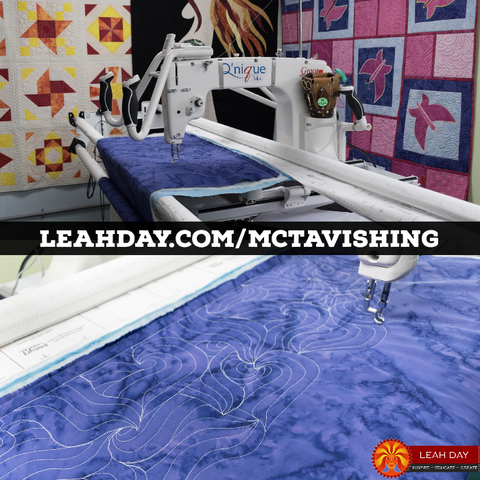
I admit, I'm still working hard to master travel stitching on my longarm, so this turned out pretty messy in comparison to how I can quilt it on my home machine. Still, the only way I'm going to master this skill is to keep quilting, keep travel stitching carefully and eventually I'll have just as good control over the longarm movement on the frame as I do the quilt movement on my home machine.
Quilting on a Smaller Scale
I think the texture of McTavishing really comes out when you quilting it on a smaller scale with 1/4 inch of space or less between the quilting lines. I know not everyone loves quilting on a smaller scale, but this is where you get the most bang for your buck.

Quilting densely allows you to quilt many more repetitions of the design (more practice) within a smaller space (less wasted fabric and batting). As you could see in the quilting tutorial on my home machine, quilting McTavishing on a smaller scale with 1/4-inch between the lines of quilting brings out the texture on the quilt.
See that gorgeous flowing texture in the background around this intricate snowflake motif? That's McTavishing, filling in the space beautifully and adding a gorgeous to the Winter Wonderland Quilt.
This would be the perfect scale for quilting around applique or to add flowing wind to the sky in a landscape quilt. And yes, quilting dense like this will make your quilt a bit stiffer, but really how your quilt feels after it's finished has much more to do with the batting in the middle than the quilting designs.
Learn more about picking the right batting for your quilts in the Basting Basics Workshop.
Now that you know how to quilt McTavishing, I hope you can see the amazing possibilities this design has for your quilts. Not only will it help you master travel stitching, it will also be a great way to practice echoing as each curving line echoes another.

The best possible way to master any quilting design is to quilt it a lot! Pull out a quilt and begin quilting it with McTavishing today. By the time you finish machine quilting an entire quilt with this design, you'll have gained a lot more skill and have a greater understanding for how this design works.
Would you like to learn more fundamental free motion quilting designs? Click the links below to learn how to quilt the four designs I think you should master first:
Let's go quilt,
Leah Day


